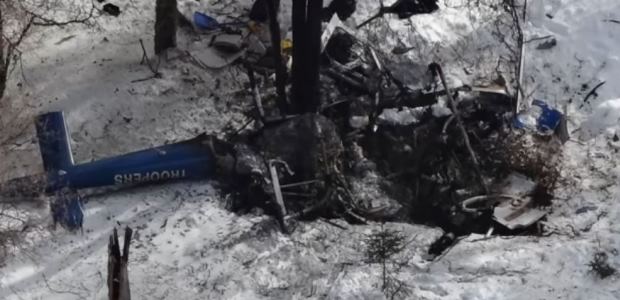
New Show Spotlights Work of NTSB's Alaska 'Go Team'
NIOSH has reported that, from 1990 through 2009, aviation crashes in Alaska killed 149 pilots, resulting in a very high annual pilot fatality rate of 287 per 100,000 pilots.
In November 2014, the National Transportation Safety Board concluded an investigation of the March 30, 2013, crash of an Alaska Department of Public Safety helicopter, finding that it was caused by the pilot's decision to continue flying into deteriorating weather conditions and also stemmed from the department's "punitive culture and inadequate safety management." The crash occurred as DPS personnel were on a mission to rescue a stranded snowmobiler near Talkeetna, Alaska. The pilot, another state trooper, and the snowmobiler died in the crash.
NTSB found that the pilot's "exceptionally high motivation to complete search and rescue missions" increased his risk tolerance and adversely affected his decision making.
"These brave few take great risks to save those in harm's way,'' NTSB then-Acting Chairman Christopher A. Hart said at the time. "There needs to be a safety net for them, as well."
NIOSH reported last year that there were 568 commuter and air taxi crashes in Alaska between 1990 and 2009, representing 35 percent of all such crashes in the United States (1,615 crashes total) during that period, and that the Alaskan crashes represented 20 percent of the total U.S. fatal crashes with 20 percent of the fatalities during the period.
"Alaska is uniquely dependent upon air transportation. Commuter and air taxi operators serve as the main link to much of Alaska, transporting people, cargo, and mail to more than 250 villages located off of the road system," according to NIOSH's web page about commercial aviation in the state. It said from 1990 through 2009, aviation crashes in Alaska killed 149 pilots (a number that does not include military pilots), an average of eight per year from a commercial pilot workforce of about 2,600—resulting in an annual pilot fatality rate of 287 per 100,000 pilots. The fatality rate has dropped since 2009 but still remains much higher than the mortality rate for all U.S. workers, NIOSH reported.
Now, the Smithsonian Channel is about to debut a new series about NTSB investigations of air crashes in Alaska. The channel's "Alaska Aircraft Investigations" six-episode series will premiere on Sunday, March 13, at 9 p.m. Eastern time. It will show five members of NTSB's Alaska "go team" at work as they investigate some of the more than 125 crashes that occur in the state every year, according to Smithsonian Channel.
The five members of the team include Clint Johnson, chief of the NTSB Alaska regional office in Anchorage.